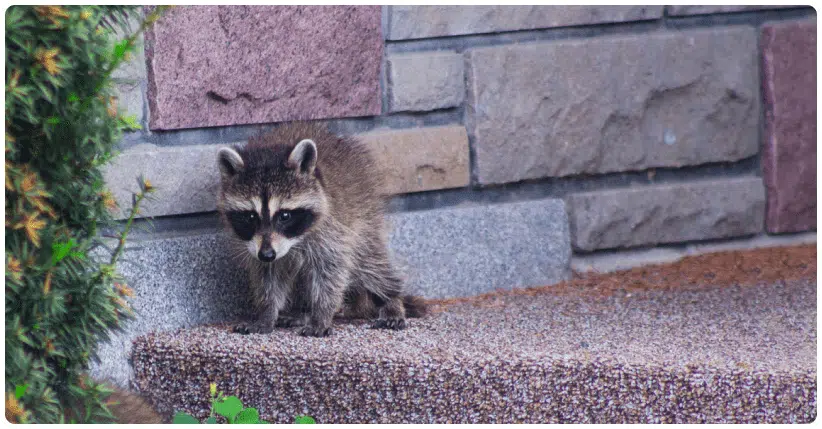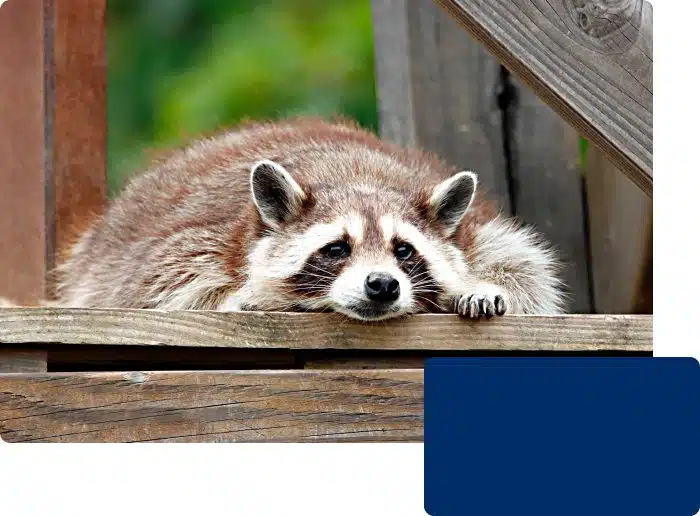
Do you hear scratching noises coming from the attic?
Knocking noises coming from the roof or inside the walls? Chittering, growling, or screeching? Is the activity mostly present at night? These are signs that one or several Raccoons might be living somewhere inside your house or nearby, maybe in a structure adjacent to your home.
Here is a guide to educate yourself about the animal and the reasons you might need to call in an expert on wildlife control.

What you should
know about raccoons?
They are medium sized mammals (16 to 28 inches and 11 to 57 pounds), native to North America. Its coat is grayish, mostly consisting of dense underfur, and can have some brown or some black tones to it. Their underfur is very effective and insulates it against cold-weather. They are a nocturnal animal (mostly active at night).
3 of the raccoon's most distinctive features
- Its extremely dexterous front paws. It can use its hands, just like a human so it has great dexterity.
- Its facial black mask.
- Its ringed tail.
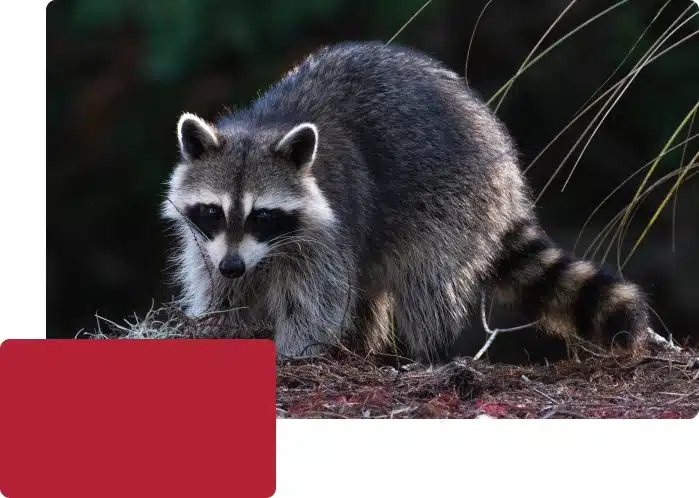
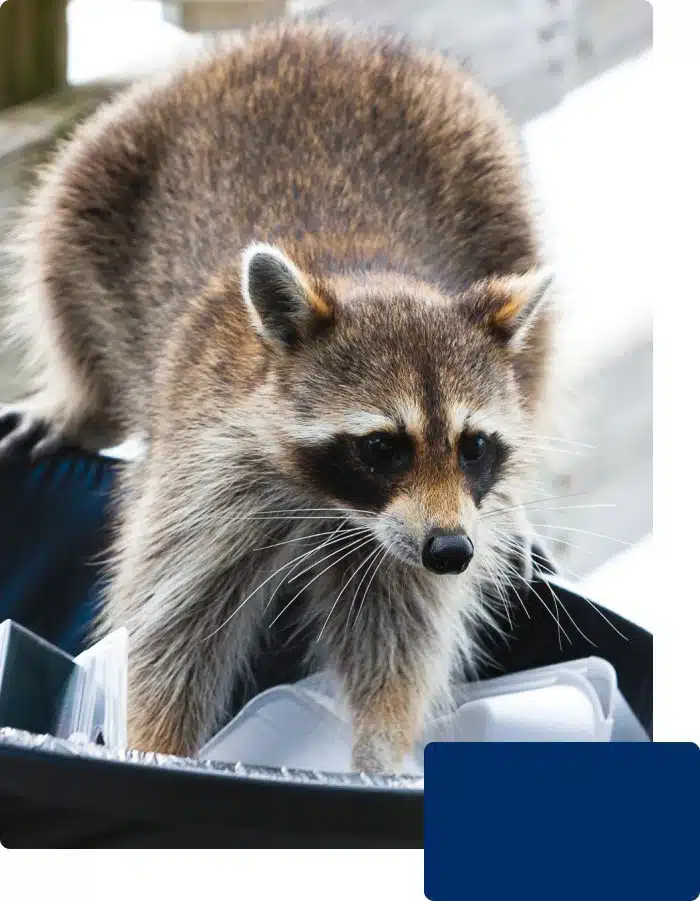
What do raccoons eat?
Raccoons are omnivores, which means they’ll eat just about anything they can find. Their diets consist of about 40% invertebrates, insects, about 33% plants and 27% vertebrates, which would be like small birds, squirrels, mice, fish and frogs. But if they live in residential areas, they’ll adapt and target garbage collectors and other human related sources of food.
Raccoons are social animals
They're previously thought to be generally solitary. There's now evidence that unrelated males will live together in a group of up to four in order to maintain their positions against foreign males during the mating season. They also huddle together, for warmth while sleeping in attics or other structures through the winter months.
How fast do raccoons reproduce?
After mating season, and a gestation period of about 65 days, a female can have from 2 to 5 young known as kits that are born in the spring (normally late March or in April). The kits are subsequently raised by their mother until dispersal in late fall. So she raises them for a good long time nursing at first and then they follow in and out and feed along with her.
It’s not unheard of for female raccoons to have a second litter out of the usual season. This happens according to food sources, and in cases where the female wasn't impregnated during the usual mating season.
Where do raccoons live?
The ideal real estate for a raccoon would be a giant tree with a big knothole in it. They would insulate it with grasses and other material they could find. For them, living up high is better than low, because they're protected from their probably only natural predator around here; coyotes.
They are attracted to the warmth of human structures as they know instinctively that it would be a great shelter if they could get in. If you have any areas on the structure that are vulnerable due to age, or if it's started to be dilapidated in any way, they will spot it. They can actually smell rot or humidity on any kind of wood, which is oftentimes on a roof.
They're strong and can rip out vent attic fan blades, push them, bend them, get in that way, and even rip off attic vent covers. Sometimes it ends up being like a lid. You don't even know if there's anything going on because their entry point might be a flap.
They're excellent diggers as well. So they'll start low, get under front porches and find their way inside higher, dryer and warmer parts of the structure.
The raccoon is known for its intelligence. As studies have shown, they are able to remember the solution to tasks for at least three years. So that's why, once you get one that's familiar with breaking into the roof of a structure, it remembers the entry point and the way they achieved it the first time.
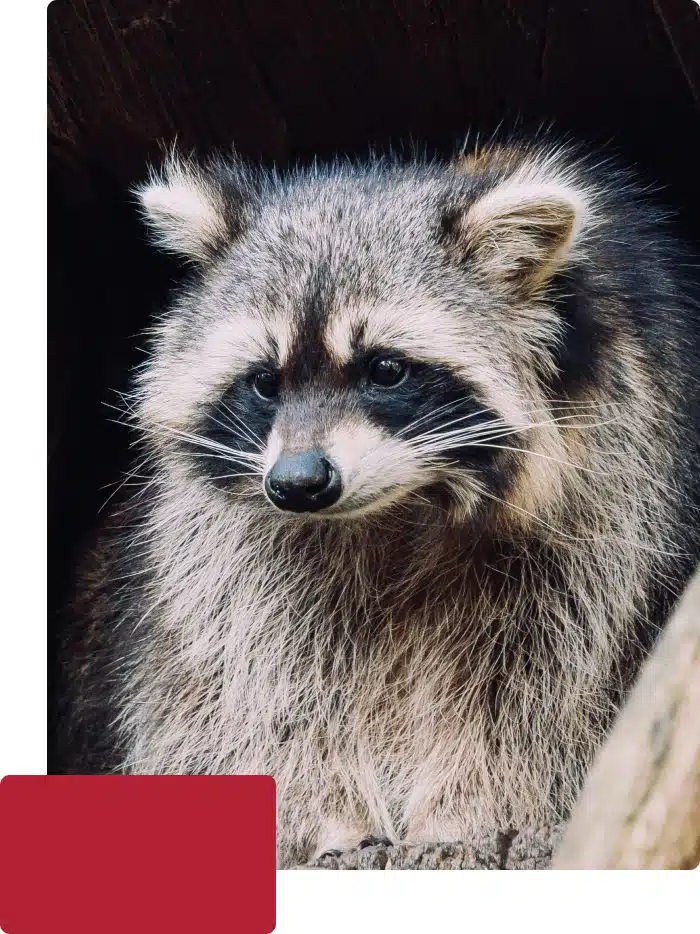

Why are raccoons detrimental?
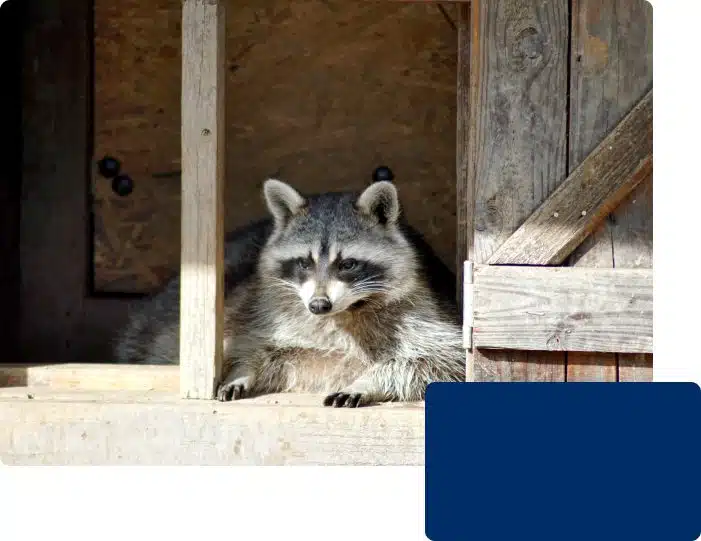
A female raccoon will seek shelter out of the elements, away from other raccoons or potential threats, when it's time to have their litter. Often the female raccoon will break into a man-made structure causing significant damage to a soffit or roof. Once inside the structure, the female raccoon will have her young (2-6). Usually there’s only one litter per year, with its exceptions. She will have her young that she will raise for months until they are ready to go off on their own.
Other problems that result from the animals living inside the structure range from moisture, damage to walls, roofing, flooring, made by the animal for the entry/exit point, parasite related issues, odor and contamination from urine and feces causing a potential health concern for you and your family.
Sometimes they look for another shelter that's just out in the wild, mainly in July because of the heat inside the attic or other structure. At this point, the litter is close to leaving the mother and it may appear that the problem has resumed. But, chances are, the female or the young, remember where they were born and go back there looking for shelter. That's why it's extremely important to patch right away the entry/exit point, also because some other animal can then take shelter.
Raccoon feces may carry what is known as raccoon roundworm which is a parasite extremely harmful for humans and other animals. Their eggs may lay dormant, so the infection is probable if their feces are ever in contact with the family or the house. AMPEST experts are extremely meticulous at picking up droppings and cleaning areas that might be infected. They are equipped with goggles, mask, hepa filter and respirator, gloves, and special suits. No person should deal with infestations themselves without the support of experts, because of the risks that are involved.
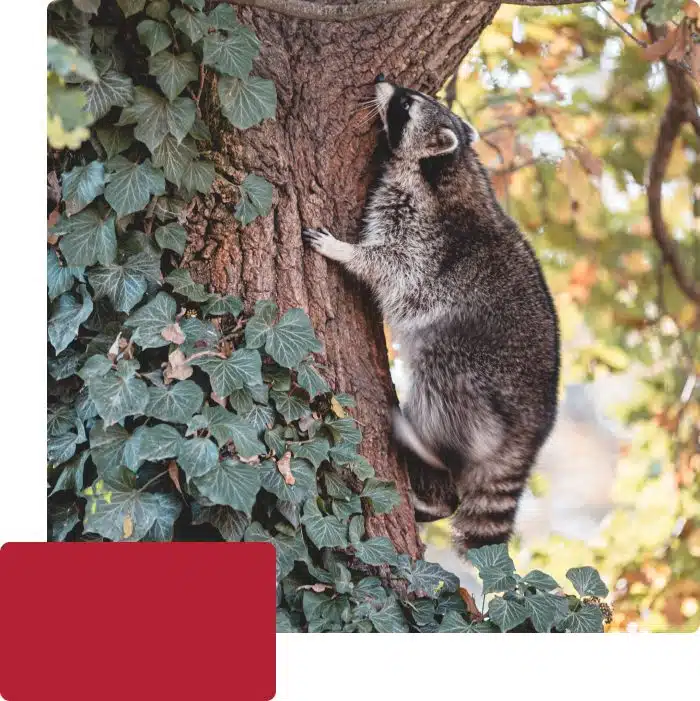
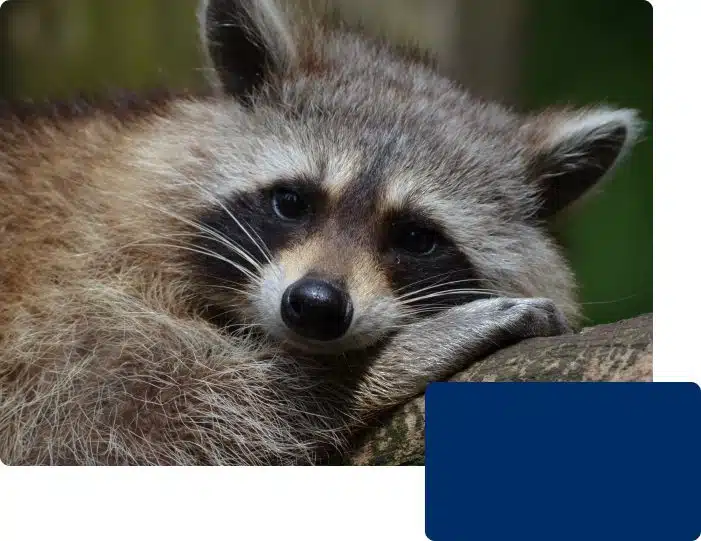
Also, it is not recommended for a person to try and catch the animals by themselves. Even though it is highly unlikely these days, Raccoons may carry rabies and other diseases and they will attack humans if provoked. Leave the trapping to certified AMPEST experts.
If you picked up any signs from this article and suspect you may have a raccoon related pest control issue, call AMPEST, we will make sure to answer all your questions and provide guidance and services adapted to your every need.

Monday - Friday: 8:30am - 5:00pm
Saturday: 8:30am - 12:00pm
Contact Us
"*" indicates required fields

